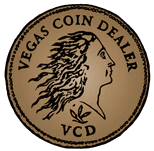Where Did Gold Rush Start
Many people are surprised to learn that the site of the first gold rush in the United States was not California, but rather Georgia. Since Georgia and North Carolina were the largest gold producers before 1849, they supplied the majority of the nation's metals and coins. Conrad Reed, a young child, was playing by a river in 1799 when he discovered a seventeen-pound gold nugget. The nugget was sold for $3.50 by his father, who had no idea what his son had discovered. The reeds farm became a popular destination for fortune seekers as word spread about it. Prospecting for gold at that time involved using pans and sitting in the river to pan for it. Philadelphia's mint nonetheless received roughly $2 million in gold for coinage, despite the poor transit options.
The rise in gold mining and the overall demand for gold prompted miners to abandon rivers in favor of the vain underground. As time went on, more and more independent miners were employed by firms that had better equipment and hired European miners to teach them how to mine. These were the companies that traveled to California in search of gold later on. '
A surge in gold and miners meant that bartering for products became obsolete and the government didn't have enough money to go around. Because gold dust wasn't adequate or easy to use, gold coins were established as a kind of cash instead. The journey to the Philadelphia mint by stage coach was long and perilous, so it had to be converted into coins. The it was possible to privately mint money was first demonstrated in Templeton Reid's story, and as a result, 40 various businesses and individuals began using the gold dust they had previously collected to mint their own money as an improvement over the inadequate federal currency at that time.
TEMPLETON REID'S BACKGROUND.
Reid, who was born in 1789, worked as a watchmaker, cotton gin manufacturer, gunsmith, metal worker, and jeweler throughout his life. Reid spent the fall of 1828 touring gold fields and learning about coin manufacturing. To learn how to make coins, he researched the principles of coin production and even engraved his own dies after doing extensive research into the subject matter. On July 24, 1830, a local newspaper reported that Reid was producing gold coins for $2 12, $5, and $10. This was the first time in our country's history that gold coins had been privately issued as currency.
Nevertheless, there were issues with Reid's new coin, as well as suspicions regarding the legitimacy of the whole thing, Constitutionally, states are prohibited from minting their own currency. No mention of a person creating his or her own coin being legal can be found in the US Constitution. Is it worth its weight in gold? The answer turned out to be roughly 60 cents wrong. The cost of producing the currency was the amount that was absent from the coin, according to his reasoning.
While the coin was lawful, the media inflated how many coins were being created and Reid was frequently criticized for being the coin's Assayer. This forced production of the coin at Templeton Reid Mint to halt on October 18, less than two and a half months after it begun.
On spite of Reid's pioneering work in private coinage, the Bechtlers garnered more notoriety for their efforts. The Bechtlers struck a gold dollar 18 years before the United States Mint. As a result, Bechtlers gold became the de facto currency of the Confederacy thirty years later.
When Christopher Bechtler was born in 1782 he apprenticed in the fields of metallurgy, gold smithing, and gunsmithing, among others. On October 12, 1829, he and his two sons, Charles and Augustus, as well as his nephew, Christopher, Jr., emigrated from Baden to New York City. Two weeks after obtaining US citizenship in Philadelphia. Chris was running his own clock and watch repair firm in Philadelphia by March of that year.
Rutherfordton, North Carolina became his new home once he decided to leave everything else behind. It's not certain why he left the city, but it's possible he left because of the gold rush or because he wanted to avoid the competitive jewelry market in the city. The family purchased land between the mountain and Cathey's brook in April of 1830 and erected a residence there. They'd become miners, jewelers, and even minters in this county.
The money was being pooled in the big cities at a period when gold coins were hard to get by in a gold mining community. Farmers in the South were losing money because their crops were growing slowly and not getting to market quickly. As a result, the miners would have to travel a long distance and risk being robbed and kidnapped if they wished to turn their gold into coins at the Philadelphia mint. The only other option was to reduce their gold to dust and use that as local currency, but that was difficult to weigh, determine fineness, and handle, so they required a more convenient method of exchange. When a petition to Congress was made in the spring of 1831 requesting the building of a branch mint in the gold region, all that changed Their gold was being taken away from American coinage by the Europeans, who were unable to safely carry it to Philadelphia, the petition stated.

